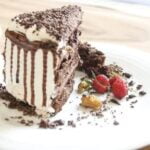Are you looking for a creative and elegant way to decorate your next cake? Look no further than frosting flowers. In this article, we will show you how to decorate a cake with frosting flowers, transforming a simple dessert into a stunning centerpiece for any occasion. Whether you’re a beginner or an experienced baker, mastering the art of frosting flowers will take your cake decorating skills to the next level.
Frosting flowers have been a popular choice for decorators due to their timeless and sophisticated appeal. The delicate beauty of these edible blooms can turn any ordinary cake into a work of art.
From classic roses and daisies to more intricate designs like peonies and sunflowers, the possibilities are endless when it comes to frosting flowers. Whether you’re celebrating a birthday, wedding, or any special event, frosting flowers add an extra touch of elegance and charm to your dessert table.
In this article, we’ll cover everything you need to know about creating stunning frosting flower designs on your cakes. We will explore the tools and ingredients needed, provide step-by-step instructions for piping basic and advanced frosting flowers, offer tips for arranging them on the cake seamlessly, and troubleshoot common issues that may arise during the decorating process.
So, if you’re ready to elevate your cake decorating game with beautiful frosting flowers, read on to learn all the tips and tricks you need to get started.
Choosing the Right Tools and Ingredients for Frosting Flowers
When it comes to decorating a cake with frosting flowers, choosing the right tools and ingredients is essential for creating beautiful and delicate designs. Here are some key items you will need to get started:
- Piping bags: Using the right piping bag is crucial for creating frosting flowers. Look for a set of reusable piping bags that are sturdy and easy to clean. Make sure to have different sizes on hand to accommodate various amounts of frosting for different flower designs.
- Frosting tips: The choice of frosting tips will greatly impact the look of your frosting flowers. Invest in a variety of tips such as round, star, petal, leaf, and ruffle tips to create an array of flower shapes and textures.
- Buttercream: Buttercream is the ideal frosting for creating intricate flower designs due to its smooth consistency. To achieve vibrant colors, use gel food coloring instead of liquid food coloring, as it won’t alter the consistency of the buttercream.
Before you begin decorating your cake with frosting flowers, make sure to have these essential tools and ingredients ready. The right equipment will make the process much easier and allow you to create stunning floral embellishments on your cakes. With these fundamental tools in hand, you’ll be well-prepared to embark on your frosting flower decorating journey.
Preparing the Buttercream Frosting
Creating beautiful frosting flowers starts with having the right consistency and color of buttercream frosting. The texture of the frosting is crucial in achieving well-defined flower petals and a smooth, easy-to-pipe consistency. To begin, it’s essential to use a sturdy stand mixer or hand mixer to ensure the frosting is well-blended and free from lumps.
When preparing the buttercream frosting, it’s important to start with room temperature butter to ensure a smooth and creamy base. Gradually add in confectioners’ sugar and a small amount of milk or heavy cream until you achieve a thick, yet spreadable consistency. To achieve the right color for your frosting flowers, consider using gel food coloring, as it provides vibrant hues without altering the texture of the buttercream.
In addition to ensuring the right consistency and color of the buttercream frosting, it’s important to taste test along the way. Adjusting the sweetness or adding additional flavor extracts, such as vanilla or almond, can enhance the overall taste of your frosting flowers and complement the flavor of the cake itself. With these tips in mind, you’ll be well on your way to creating beautifully decorated cakes with stunning frosting flowers.
Piping Basic Frosting Flowers
To create a classic and elegant rose out of frosting, start by fitting a piping bag with a large, round frosting tip. Fill the piping bag with buttercream frosting that has been tinted to the desired color using gel food coloring. Begin by holding the piping bag perpendicular to the surface of the cake and squeezing the frosting while swirling in a circular motion, starting from the center and working your way outwards.
This will create layers of petals, giving the appearance of a blooming rose. Practice on a piece of parchment paper or wax paper before trying it on the cake to get a feel for how much pressure to apply with your hand.
Making Daisies:
Daisies are another popular choice for frosting flowers and are relatively simple to create. With a piping bag fitted with a small, star-shaped frosting tip and filled with white buttercream frosting, start by piping a small dot in the center of where you want the daisy to be.
Then, around this center dot, pipe several small stars in a circular pattern to create the petals of the daisy. Repeat this process as many times as desired for multiple daisies on your cake.
Creating Other Classic Blooms:
In addition to roses and daisies, there are other classic blooms that can be easily created with buttercream frosting. For example, tulips can be made by using an upright leaf tip to pipe an elongated tear-drop shape onto the cake and then adding smaller leaves next to it.
Piping simple blossoms or chrysanthemums can also add variety and visual interest to your cake design. Experiment with different types of frosting tips and colors to customize your selection of classic blooms for your cake decoration needs.
Advanced Frosting Flower Techniques
Once you have mastered the basics of piping frosting flowers such as roses and daisies, you may want to challenge yourself with more intricate designs like peonies or sunflowers. These advanced frosting flower techniques require a bit more practice and patience, but the results are absolutely stunning. With some guidance and a steady hand, you can create beautiful and lifelike floral decorations for your cakes.
To make peonies with buttercream frosting, start by using a petal piping tip to create small ruffles around a central bud. Gradually layer additional rows of petals around the bud, making sure to overlap each row slightly to create a full and voluminous flower.
As you pipe each petal, gently lift and release the piping bag to create natural-looking curves and waves in the petals. Finally, add a touch of color to the tips of the petals with edible food coloring for a realistic finishing touch.
For sunflowers, use a large round piping tip to create the center of the flower with dark brown or black frosting. Next, switch to a larger petal piping tip to pipe the golden yellow petals around the center. Start with shorter petals near the center and gradually make them longer as you work your way outwards.
The key is to vary the length and angle of each petal to mimic the look of real sunflower petals. Finish by adding small dots of brown or black frosting in the center of each petal for added detail.
With practice and patience, you can master these advanced frosting flower techniques and use them to elevate your cake decorating skills. Don’t be discouraged if your first attempts don’t turn out perfectly – like any skill, cake decorating takes time to perfect. Keep practicing and experimenting with different designs until you feel confident in creating intricate frosting flowers for your cakes.
Remember that cake decorating should be fun and creative, so don’t be afraid to add your own personal flair to these advanced frosting flower techniques. Whether it’s experimenting with different colors or adding extra details, let your imagination run wild as you decorate your cakes with beautiful buttercream floral designs.
Arranging the Frosting Flowers on the Cake
Once you have perfected the art of piping frosting flowers, the next step is arranging them on the cake in a way that looks seamless and natural. The key to creating a beautiful design is to ensure that the frosting flowers are evenly distributed and complement each other. One helpful tip is to start by placing the largest flowers on the cake first, and then filling in the gaps with smaller blooms.
When arranging frosting flowers on a cake, it’s important to consider balance and symmetry. You can create a stunning visual effect by placing the flowers in a cascading pattern down one side of the cake or by arranging them in a circular pattern around the edges. This can help create a sense of movement and flow in your design.
In addition to arranging the frosting flowers, you can add depth and dimension to your cake by incorporating different levels and heights. For example, you can use different sizes of frosting flowers or vary the height of the stems to create visual interest. Remember to step back and take a look at your design from different angles to ensure that it looks balanced from all perspectives.
| Arranging Tips | Description |
|---|---|
| Start with largest flowers | Place larger blooms first, then fill in with smaller ones. |
| Consider balance and symmetry | Create cascading or circular patterns for visual impact. |
| Create depth and dimension | Vary sizes and heights for added visual interest. |
Adding Leaves and Other Decorative Elements to Complement the Frosting Flowers
When it comes to decorating a cake with frosting flowers, adding leaves and other decorative elements is essential to creating a cohesive and visually appealing design. These elements not only add dimension and color contrast but also help in enhancing the overall look of the cake. Here are some tips for adding leaves and other decorative elements to complement the frosting flowers:
- Choose the right piping tip: When creating leaves, it’s important to use a leaf piping tip that is specifically designed for this purpose. This will give your leaves a more realistic look and make the process much easier.
- Use complementary colors: Consider using shades of green for the leaves to create a natural and realistic appearance. You can also add small touches of other colors to mimic veins or highlights for added visual interest.
- Pay attention to placement: Think about where leaves would naturally fall on real flowers and arrange them around the frosting flowers accordingly. This will help in creating a more organic and lifelike arrangement.
In addition to leaves, other decorative elements such as small buds, vines, or even tiny edible pearls can be added to further enhance the design. These elements can be piped directly onto the cake or created separately using royal icing or fondant before being carefully placed on the cake once they have dried.
Ultimately, adding leaves and other decorative elements is an opportunity to personalize your cake design and showcase your creativity. By paying attention to detail and using complementary colors and textures, you can elevate your frosting flower decorations to create a stunning centerpiece for any special occasion.
Troubleshooting Common Issues When Decorating With Frosting Flowers
Fixing Smudges
Smudges can occur when the frosting is too soft or if the piping bag is held at the wrong angle. One way to fix smudges is to gently scrape off the affected area with a small spatula or knife, and then re-pipe the flower on top. If the smudge is minor, you can also carefully smooth it out with a clean finger or a small brush.
Removing Air Bubbles and Bumps
Air bubbles and bumps can distort the shape of frosting flowers. To remove air bubbles, tap the bottom of the piping bag gently against a countertop before starting to pipe. For bumps, use a toothpick to carefully poke and pop any imperfections in the frosting. Be sure to smooth out the affected area afterward to ensure a seamless finish.
Repairing Broken Petals or Stems
If a petal breaks while piping or arranging your frosting flowers, don’t panic. Simply remove any stray pieces with a clean toothpick or small brush, and use additional frosting to patch up and reshape the damaged area. To repair broken stems, add extra support by piping small leaves around the affected area.
When decorating with frosting flowers, imperfections are bound to happen from time to time. The key is to stay calm and remember that most mishaps can be easily fixed with a steady hand and a bit of creativity. With these troubleshooting tips in mind, you’ll be well-equipped to tackle any issues that may arise as you create beautiful floral designs on your cakes.
Conclusion
In conclusion, decorating a cake with frosting flowers is a delightful and creative way to add a touch of elegance and beauty to any occasion. The art of frosting flowers allows for endless possibilities, from classic roses to more intricate designs like peonies and sunflowers. Whether it’s for a birthday, wedding, or any special event, frosting flowers can really make a cake stand out and impress your guests.
After going through the process of choosing the right tools and ingredients, preparing the buttercream frosting, piping basic and advanced frosting flowers, arranging them on the cake, and adding complementary elements like leaves, you will be amazed at the stunning results you can achieve. It may take some practice to master the technique, but with dedication and patience, anyone can become proficient in creating gorgeous frosting flower designs.
I encourage all readers to give frosting flower decoration a try. Not only is it a fun and rewarding hobby, but it also allows you to personalize your cakes with your own unique touch.
With some creativity and imagination, you can create beautiful works of edible art that will leave everyone in awe. So go ahead and explore the world of frosting flowers – you may discover a new passion for cake decorating that brings joy to both yourself and those who have the pleasure of enjoying your delectable creations.

Welcome to my blog about home and family. This blog is a place where I will share my thoughts, ideas, and experiences related to these important topics. I am a stay-at-home mom with two young children. I hope you enjoy reading it! and may find some helpful tips and ideas that will make your home and family life even better!





